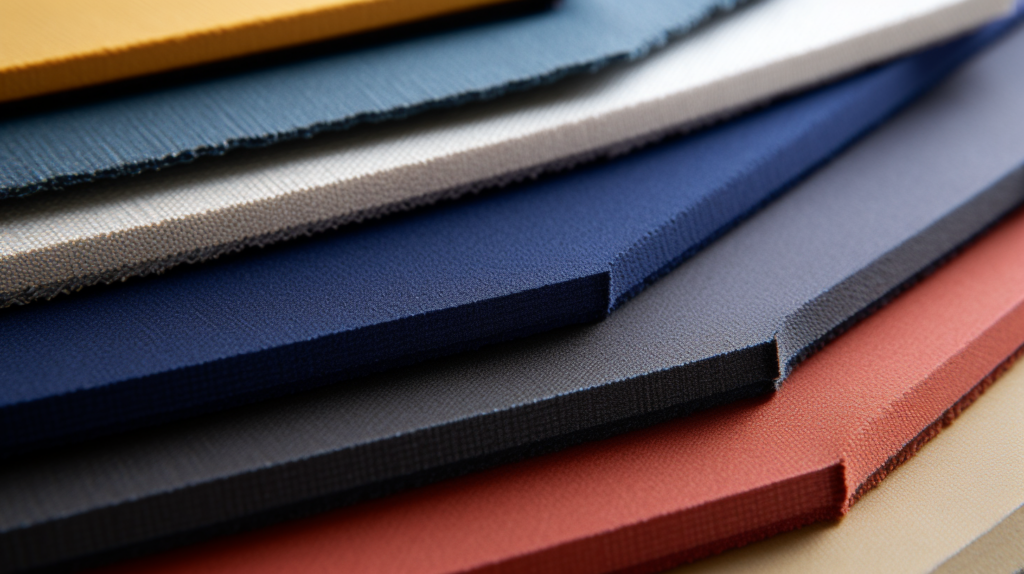
Table of Contents
The Misleading Term: Acoustically Transparent Fabric
There is no such thing as an acoustically transparent fabric. Every fabric type used in acoustics attenuates some frequencies depending on the thickness of the fabric, its total density along with the weave pattern of the fabric. The term acoustically transparent fabric is another example of how the industry uses the word acoustic on everything. The reason they do this is two fold.
The first is that using the word acoustic means that they can charge more for it over existing fabric types. Secondly, people do not understand how spend absorption technologies work so calling something transparent is a way to dodge the real issues with the term acoustically transparent fabric. When it comes to middle and high frequency sound absorption technology there are many issues with the term acoustically transparent fabric. Let’s examine a few of those issues.
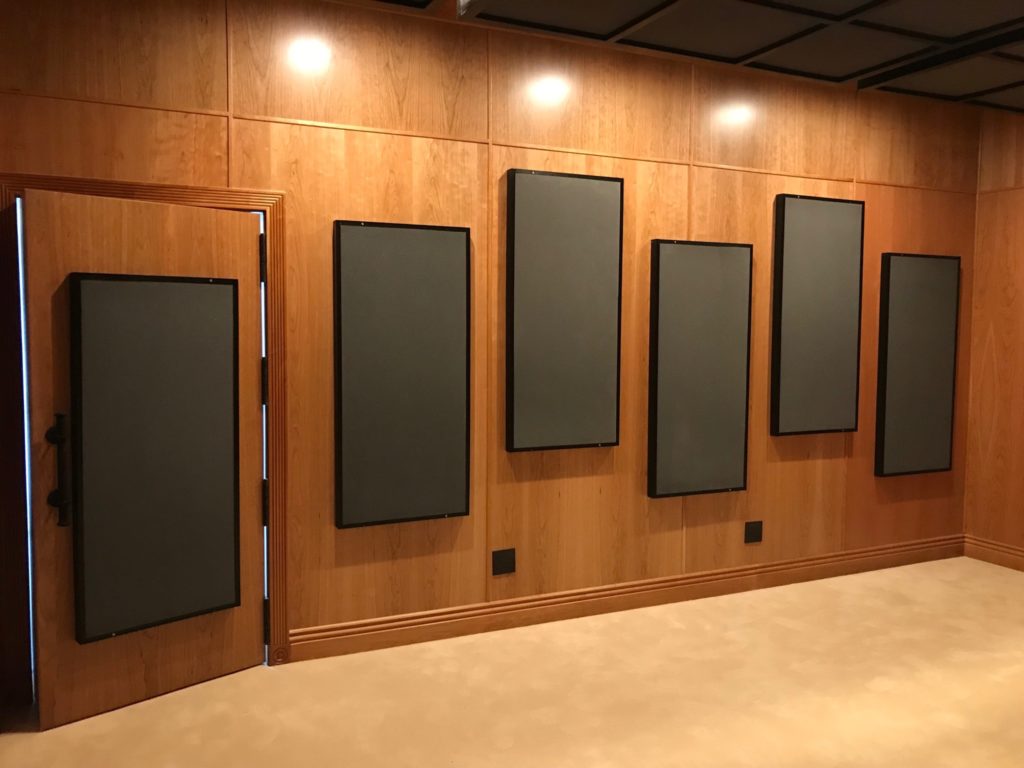
How Open-Celled Foam Works in Sound Absorption
The term acoustically transparent fabric is used when we are discussing middle and high frequency sound absorption technology. One of the most common and economical methods to achieve middle and high sound absorption frequency technology is to use open celled foam. Open celled foam works by air flowing across the surface of the open cells of the foam. It is the air flow across the surface area of the foam that creates friction. Friction produces heat which is an energy transformation.
When air flow moves across the surface of the foam, heat is created and there is an energy transformation and absorption occurs. In order to achieve absorption and get the absorption in the room to match the usage you have chosen. In order to get the open celled foam to better fit into the room, we cover it with fabric that is available in many colors.
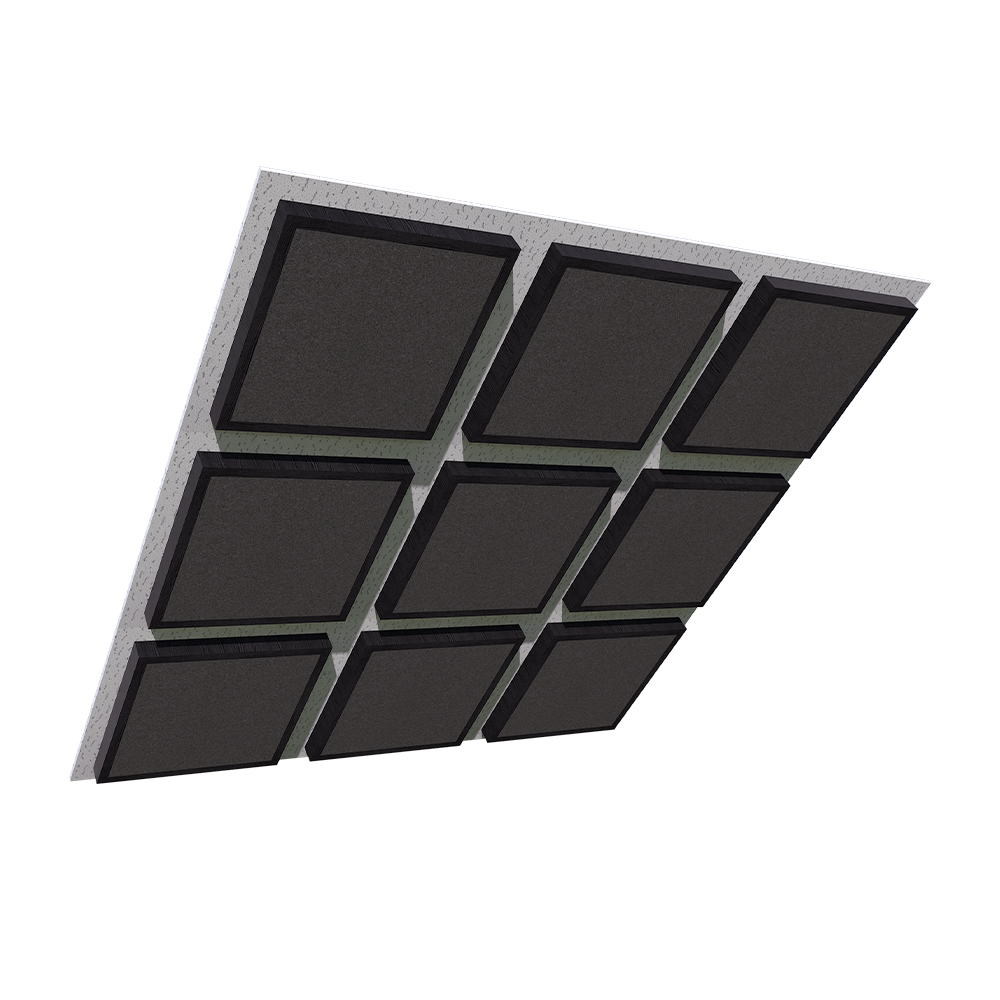
The Importance of Air Permeability Rating in Fabric Choice
When we cover the foam or any other material type with fabric of any kind, we are reducing the air flow across the surface area of the material type. When we reduce the airflow across the surface area, we reduce the performance of the foam and have less sound absorption occurring at each octave band the the technology was designed to work at. This means that since the performance is reduced you need to cover more surface area using more panels.
It is the air plow across the chosen internal panel sound absorption material type that produces the absorption. You must use a fabric that has the proper air permeability rating which rates how much air gets through using a standardized air flow test. There is no such thing as an acoustically transparent fabric. All fabrics restrict air flow and thus performance. Choose a fabric with an air permeability rating of 97% or higher.
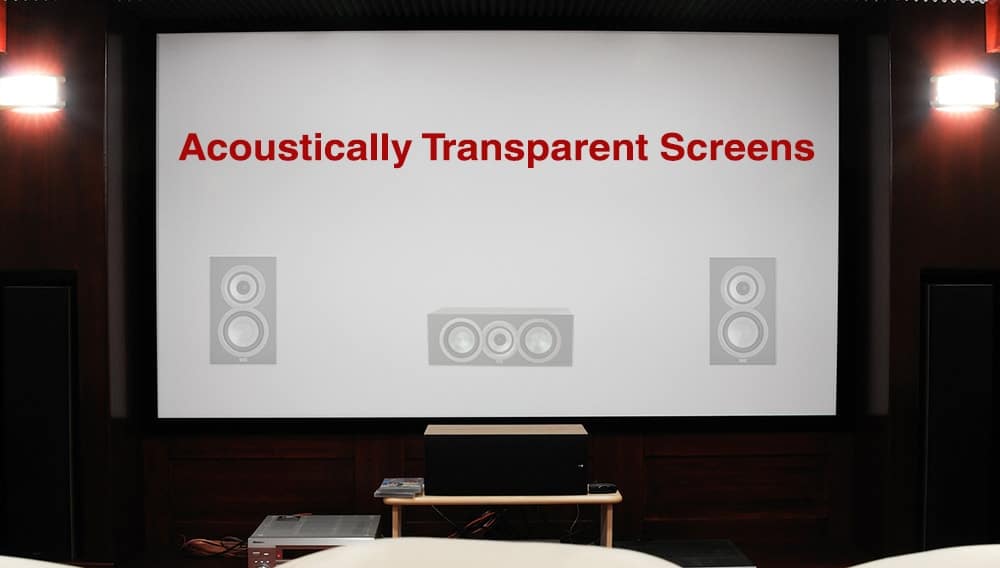
The Misuse of the Term in Video Projector Screens
We have another use of this term when it comes to video projector screens. Many times projector screens are labeled acoustically transparent screens. The implication is that you can place speakers behind the screen and their sound will transmit through the screen. They label the screen as acoustically transparent. Most of these screen types we have tested attenuate energy from 800 – 2000 hz.
This is a higher frequency range where spatial signals are transmitted with higher frequencies. If your room is designed properly higher frequencies can be made to “float” throughout your room. If a screen attenuates those frequencies, you lose this spatiality with higher frequencies. Even a speaker grills cloth can attenuate certain frequencies. Designers of the speaker take this frequency range of attenuation into consideration.
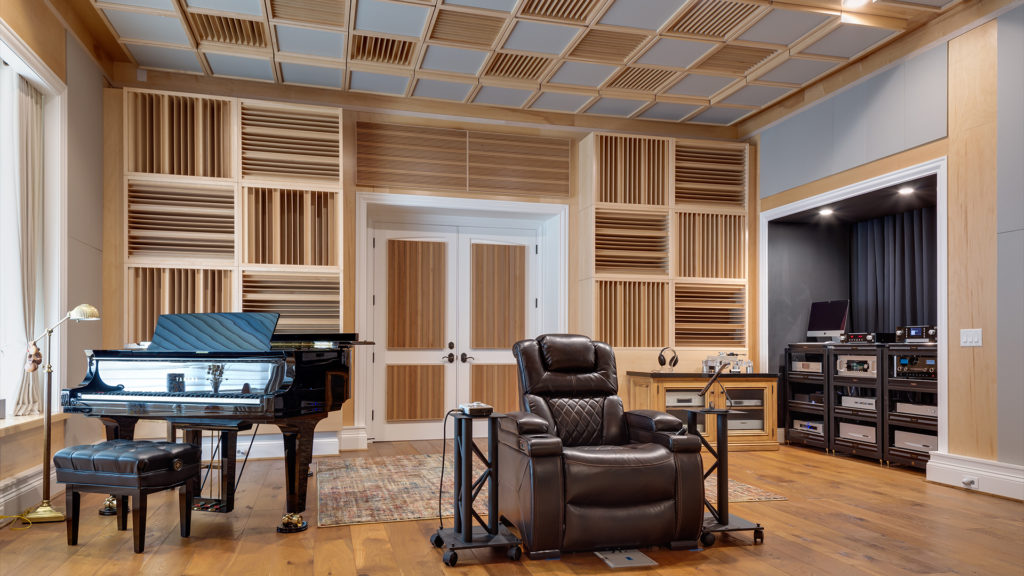
Navigating the Maze of Acoustical Products
You must be careful when walking through the garden of acoustical products. There is much to beware of especially with the labeling of the “technologies” Building insulation stuffed into a 4″ deep panel is called a bass absorber. Building insulation is not a material type used for low frequency absorption. Foam is also labeled as both a diffuser and an absorber. Neither are possible under our current laws of physics.
You must understand the lower frequency pressure waves are much different in composition than middle and higher frequency ray energy that is our voice or middle and higher frequencies. Low frequency wave energy requires a completely different technology to treat than middle and high frequency ray technology. Companies tack the word acoustic on everything they can as an excuse to charge more for something that is mislabeled and will not work for the advertised function. Contact us at Acoustic Fields – We can assist you with all design processes.
Frequently Asked Questions About Acoustically Transparent Fabric
What is Acoustically Transparent Fabric?
The term “acoustically transparent fabric” is often used to describe fabrics that supposedly do not interfere with sound absorption technologies. However, the term is misleading. Every fabric used in acoustics attenuates some frequencies based on its thickness, density, and weave pattern. There is no such thing as a fabric that is truly acoustically transparent.
Why do companies use the term “Acoustically Transparent Fabric”?
Companies use the term for two main reasons. First, labeling a fabric as “acoustic” allows them to charge more for it. Second, many consumers do not fully understand sound absorption technologies, so calling a fabric “transparent” is a way to sidestep the real issues associated with its performance.
How does fabric covering affect the performance of sound absorption materials like open-celled foam?
Covering open-celled foam or any other sound absorption material with fabric reduces the air flow across the surface area of the material. This reduced air flow diminishes the material’s performance, leading to less effective sound absorption. As a result, you may need to use more panels to achieve the desired level of sound absorption.
What should I look for when choosing a fabric for sound absorption?
It’s important to choose a fabric with a high air permeability rating. This rating measures how much air can pass through the fabric based on standardized air flow tests. While no fabric is truly acoustically transparent, a fabric with an air permeability rating of 97% or higher is generally recommended for better sound absorption.
Are video projector screens that are labeled as “Acoustically Transparent” truly transparent to sound?
No, most projector screens labeled as “acoustically transparent” actually attenuate certain frequency ranges, particularly between 800 – 2000 Hz. This can affect the spatial quality of sound in a room. Always be cautious and well-informed when selecting acoustical products to ensure they meet your specific needs.


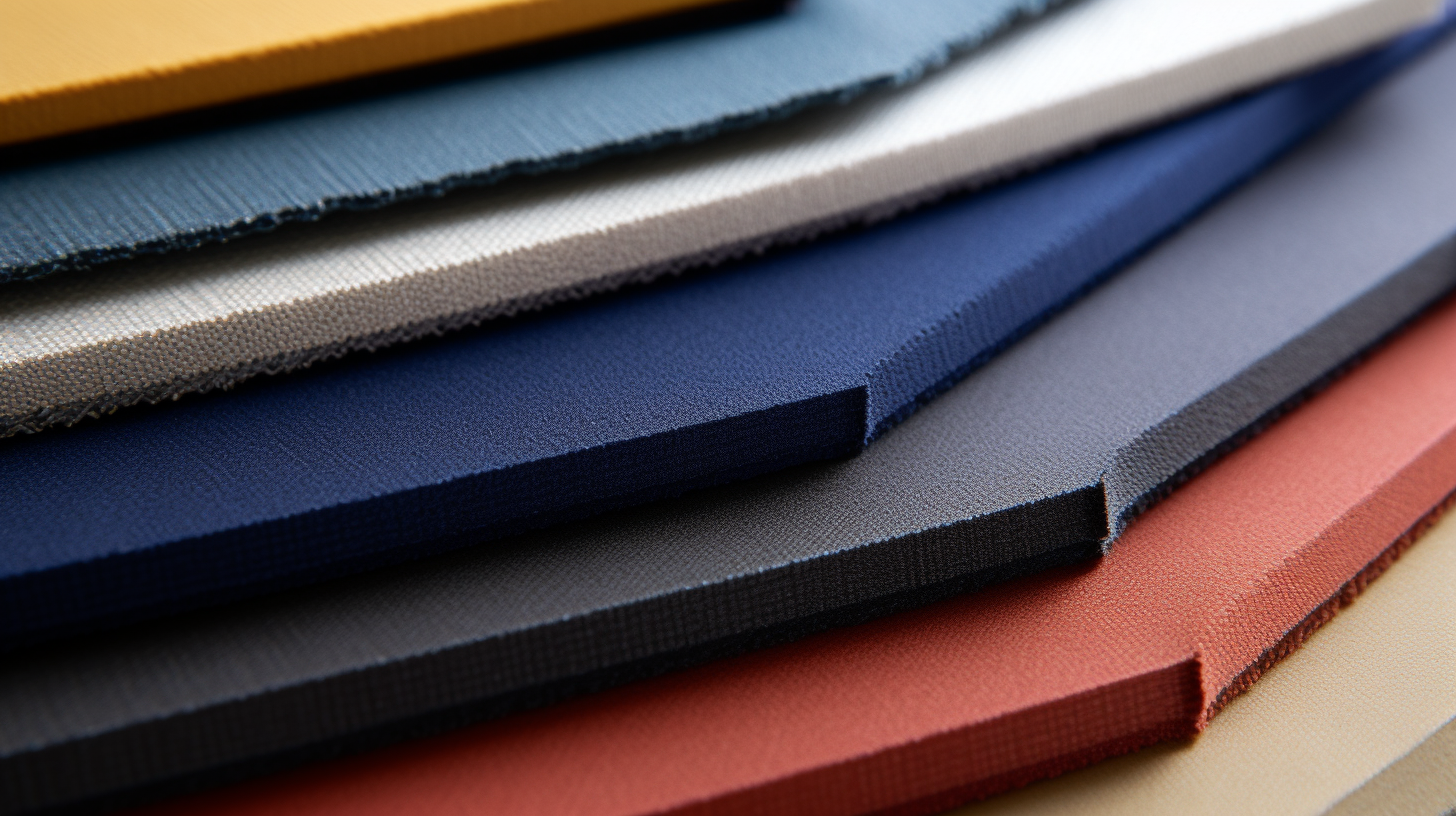





Interesting web site and provocative introduction. Please check your copy for typos, otherwise nicely presented.
I would like to see a study on Helmholtz resonators as bass traps in concept (without the math) and the use of active equalization and room acoustic coupling (again, without the math) as it pertains to how sound is perceived in different areas of a room outside the sweet spot.
We use broadband absorption in the two most critical frequency regions in small rooms. Our Diaphragmatic absorbers, ACDA series, have two responses. Our ACDA-12 is 30-50 hz. and our ACDA -10 is 30 – 300 hz. Helmholtz resonators are more frequency specific and require many more units than broadband. The goal is to pressure and reflection balance all locations within the room.